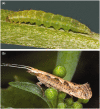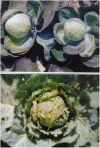A Proposal for Public and Private Partnership in Extension
- PMID: 26949567
- PMCID: PMC4765505
- DOI: 10.1093/jipm/pmw001
A Proposal for Public and Private Partnership in Extension
Abstract
Public funding for Extension in the United States has been decreasing for many years, but farmers' need for robust information on which to make management decisions has not diminished. The current Extension funding challenges provide motivation to explore a different model for developing and delivering extension. The private sector has partnered with the public sector to fund and conduct agricultural research, but partnering on extension delivery has occurred far less frequently. The fundamental academic strength and established Extension network of the public sector combined with the ability of the private sector to encourage and deliver practical, implementable solutions has the potential to provide measurable benefits to farmers. This paper describes the current Extension climate, presents data from a survey about Extension and industry relationships, presents case studies of successful public- and private-sector extension partnerships, and proposes a framework for evaluating the state of effective partnerships. Synergistic public-private extension efforts could ensure that farmers receive the most current and balanced information available to help with their management decisions.
Keywords: extension; industry; pest management.
Figures






References
-
- Ahearn M., Yee J., Bottum J. 2003. Regional trends in extension system resources. U.S. Department of Agriculture, Economic Research Service. Agricultural Information Bulletin No. 781, Washington, DC.
-
- Arbuckle J. G., Lasley P., Ferrell J., Miller R. 2012. Iowa farm and rural life poll. Iowa State University Extension PM 3036, Ames, IA.
-
- Byatt J. 2009. The Better World Report 2009: Innovations from academic research that positively impact global health. ( http://www.betterworldproject.org/BetterWorldProject/media/Better-World-..., last accessed 27 January 2016).
-
- Evenson R. 2001. Economic impacts of agricultural research and extension, pp. 573–628. In Gardner B., Rausser C., (eds.), Handbook of agricultural economics, vol. 1, part A, Elsevier Science, New York, NY.
-
- Huffman W., Evenson R. 1993. Science for agriculture: A long-term perspective. Iowa State University Press, Ames, IA.
LinkOut - more resources
Full Text Sources
Other Literature Sources
